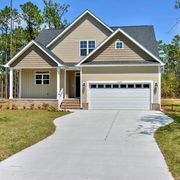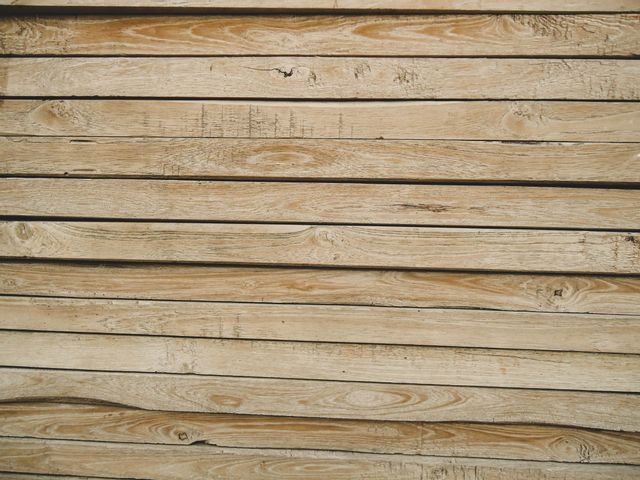
If, while bored stuck at home during the COVID-19 pandemic, you decided to take on a home project, you probably have had some sticker shock while purchasing some lumber. You may have wondered if this was a local phenomenon, but nation-wide everyone is experiencing a lumber shortage and thus price increases are across the board.
So, why have lumber prices gone up?

Pricing Theory:
Price theory is an economic concept that implies the price for any good or service is a relationship between supply and demand With lumber, many more people have been investing in their homes, straining the limited supply of this resource. Because the demand remains high and the resource remains limited, the price of lumber has begun to reflect this scarcity by charging steep premiums.
More info – https://www.investopedia.com/terms/l/law-of-supply-demand.asp
Another thing to consider about lumber as opposed other inputs in building, is that lumber is traded as a commodity. This means that the price changes frequently based on supply and demand. A resource is traded in this way is if there is enough supply and demand of a well-defined valuable (a particular stock, bond, or in our case lumber). Commodity trading is typically a good thing for the consumer as during normal non-pandemic times as the consumer is able to get a fair price for the product since the commodity on the open market moves toward the equilibrium price.
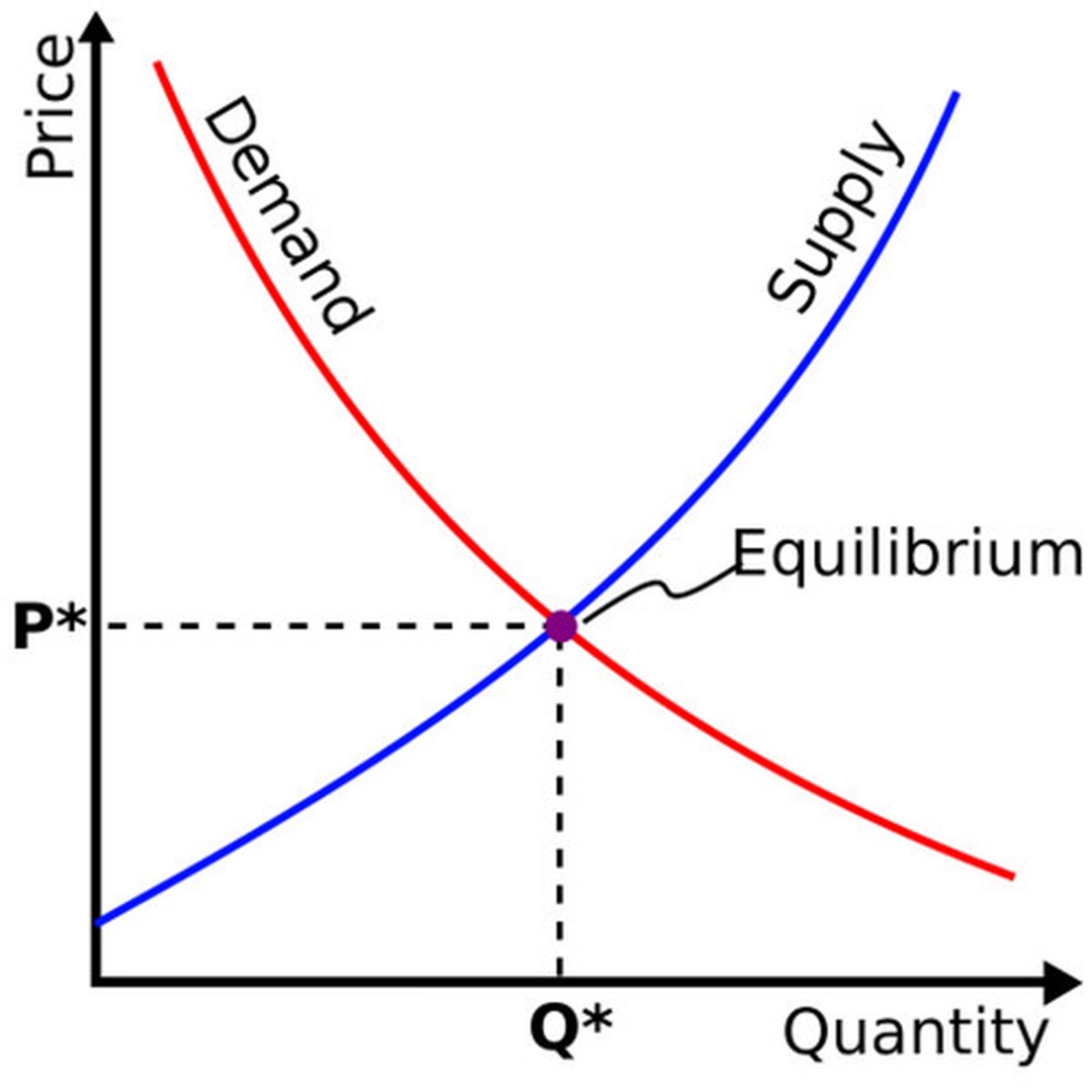
Our Experience:
Back in March, when the pandemic first, hit everyone was worried about what the economy was going to look like going forward. This uncertainty drove financial markets to drop quicker than ever seen in modern history. Big investors were anticipating a frozen economy for months to years, and a massive sell-off ensured. We made the decision not to start constructing any new homes that were not already under contract to be sold. This meant we did not start a new project for about 8 weeks despite a lot of demand for new homes prior to this moment.
Mid way through May we were starting to see a sharp increase in demand for new homes and the financial markets seemed to be recovering. At this point, we decided to move ahead with pulling permits and starting to build where we left off in order to serve our community’s needs.
Our Understanding:
We believe that in March when we made the tough decision to stop building new homes, we weren’t the only ones. Subsequently, lumber experienced a dip in price due to low demand from buyers. Lumber manufacturing companies in response to this anticipated a long-term dip in demand moved to lower the supply of their lumber to stabilize cost.
When we decided to try to catch up for lost time, lumber supplies had been diminished yet we needed almost 2x the amount of lumber as we had before. With lumber manufacturers unable to increase production as quickly as they had decreased due to hiring and the general troubles of lumber manufacturing and keeping employees healthy during the pandemic this led to a shortage of lumber in the market.
Not only is it hard for the lumber manufacturers to increase supply, for developers and builders it is hard to slow demand. Once a home or building is under construction even at the threat of taking a loss on the project it is almost always the right decision financially to continue the project despite the increased costs.
The inability to shift supply and demand quickly is called inelasticity of the demand and supply curve. This happened for the short term at least.
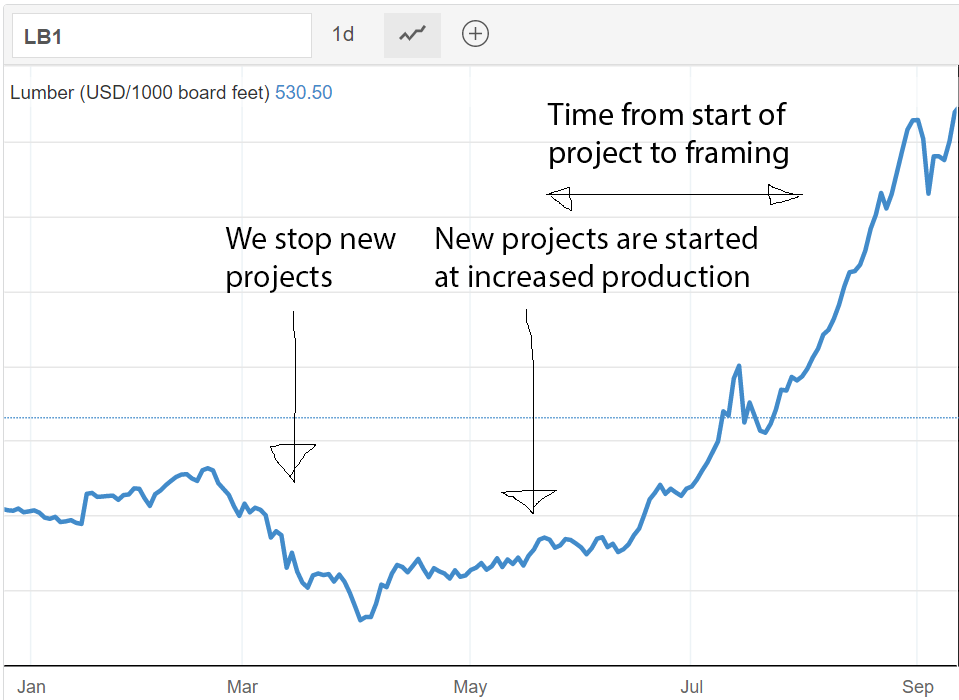
Summary:
So, to sum it up, with the inelasticity of the supply of lumber and the increased demand in homes, we saw a record increase in the price of lumber.
Projection:
While short term both supply and demand are inelastic (not easy to change) we will be living with these peak higher lumber prices for a few more months. There is already light at the end of the tunnel as we’ve seen futures contracts (the estimated future price of the commodity) drop sharply in value for lumber.
As supply and demand begin to return to normal, we’re anticipating the prices of lumber to continue to drop. Unfortunately, we don’t anticipate the lumber prices to return to the pre-pandemic levels as quickly as they went up. This will depend largely on how quickly lumber is able to be brought to market and the future demand for this lumber.
While lumber futures are showing a steep decline, it will likely take some time before this decline is reflected in lumber prices at our local lumber yard.
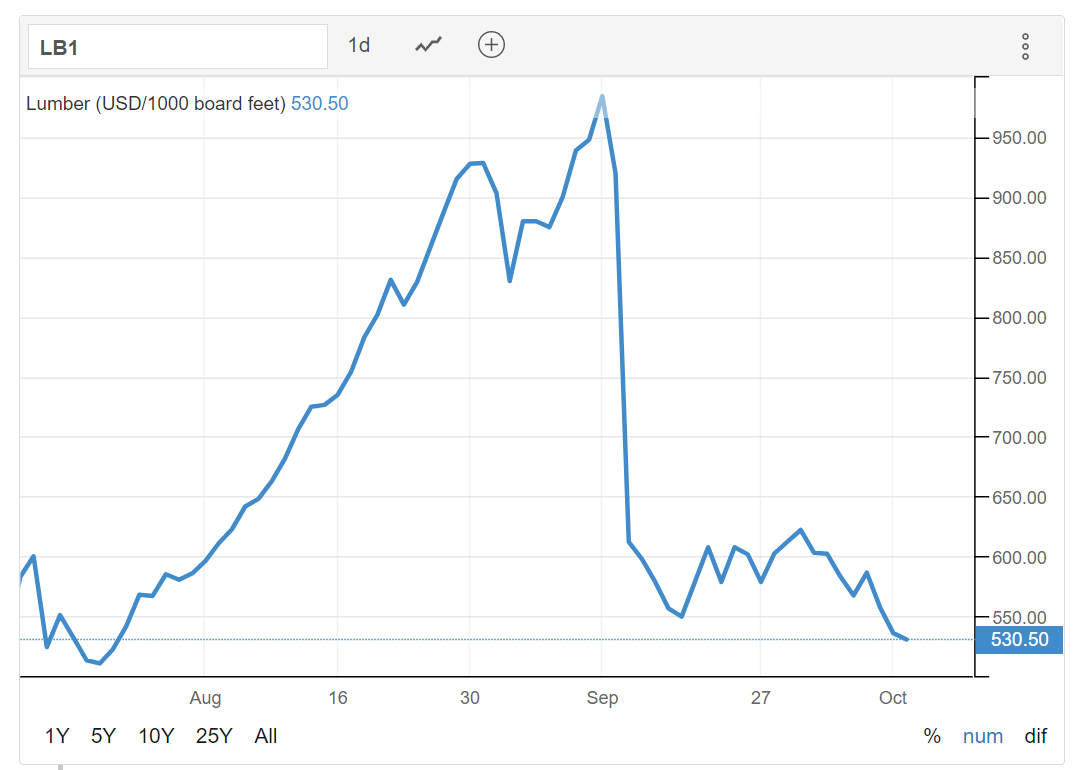
What are we doing?
Well, we’re going to continue building but have slowed our rate of starting new homes until lumber prices become more affordable or the prices of homes increases enough for us to justify increasing production again.
We’re starting 2 new spec homes soon, and they’ll have a raised slab foundation instead of a framed floor crawlspace foundation that we normally put in. While we typically build a crawlspace foundation the cost difference is too much to justify it.
For the time being, even with some price increases, we’re anticipating taking a pretty big hit to our profit margin on new homes, but hopefully things will become stable again in the future.
Have you been affected the lumber shortage? Do you think something else led to our current lumber prices? Let us know.
If you’re looking for home builders to construct your dream home, contact Langbeen Builders in Southport, NC. They’ll work closely with you to create a house that’s perfect for your family. To schedule a consultation, call (910) 547-4205, or visit their website to view a gallery of their work.
About the Business
Have a question? Ask the experts!
Send your question

